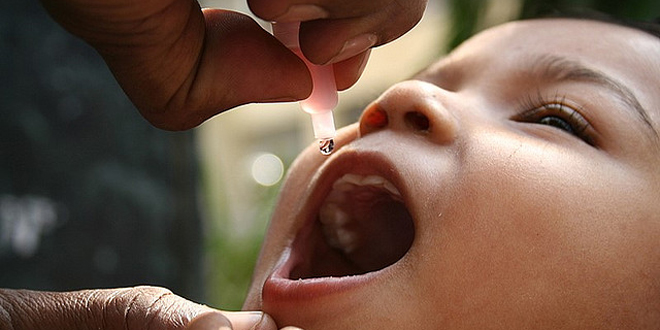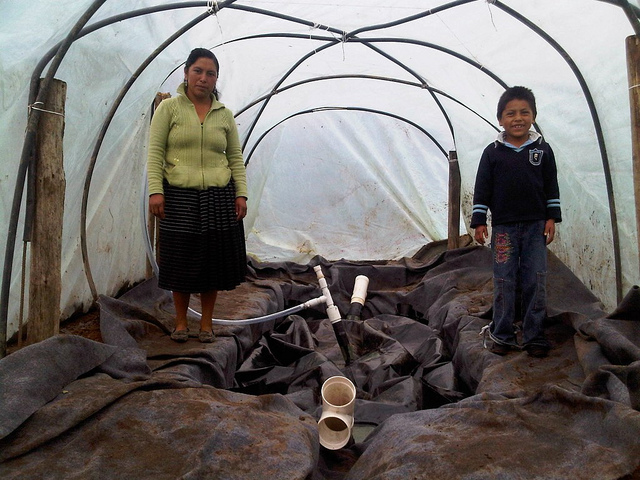
This spring, the Global Polio Eradication Initiative announced its goal to eradicate polio by 2018. National governments and global foundations immediately pledged millions of dollars to fund the program’s community health initiatives in the few countries (Nigeria, Pakistan, India) where endemic polio remains. Initially, the disease was supposed to have been eradicated by 1990, but despite a massive influx of resources from the WHO, Gates Foundation and UNICEF, campaign fatigue and lingering pockets of wild polio in hard-to-reach areas have allowed it to simmer on.
The continued existence of polio, rising rates of chronic infectious disease like tuberculosis, and the poor health outcomes of HIV patients raise questions about the efficacy of strict biomedical interventions. Infectious diseases kill up to 10 million people annually, and the economic impact on individual families can be catastrophic, eating up to 10% of a household’s income. What point is there in putting a clinic in a village if no one can afford its services? And how sustainable are aid programs that donate medicine to an impoverished population?
Instead, a recent shift in research is rethinking disease prevention and outcomes in terms of socioeconomics, rather than pure medicine. This new field of poverty reduction research suggests that synergizing public health programs with development initiatives can tackle the underlying causes of disease outcomes. Microfinance is one of the avenues suggested -- and it's a promising one.
A number of recent studies have looked at the link between microfinance initiatives and health status. One impact evaluation of five microfinance initiatives in different countries found that 80% resulted in improved health care access. These incidental consequences of expanded access to credit are well-documented.
A number of studies from Bangladesh have demonstrated a link between women’s exposure to credit programs and their awareness of health issues. Some even suggest that community health education programs alone have made minimal improvements because they are not appropriately tailored to reach the marginalized poor. Microcredit programs, on the other hand, are specifically designed to reach these groups, and could be an effective forum for disseminating health information.
Offering community health education as a non-financial service in addition to credit could be a strategy for socially-responsible MFIs to couple economic and health status improvement. For example, Kiva partner Asasah, in Pakistan, sells mandatory health insurance to its borrowers and offers quarterly health promotion workshops.
MFIs offer a unique advantage for health status promotion for the very poor. Microfinance programs exist in slums, rural areas, and poverty-stricken urban areas. For them, deprivation is an opportunity. In places where access (to health services, to financial services, to economic opportunity) is the primary problem, the MFI is well-situated to respond. If the mandate of an MFI is to expand access to credit, why not to other non-financial services, as well?
The infrastructure of microfinance may also inform health access expansion. Beyond the incidental increase in access (the idea that an increase in access to financial services may enable a family to afford medical care, as opposed to any specific programming put in place by the MFI), the MFI model is compelling. Even in the poorest part of the world, microcredit programs have incredibly high repayment rates (Kiva’s currently hovers around 99%), and so are able to recoup their administrative costs. The lean, grassroots attributes of their program make them leaner, more flexible organizations than many NGO or national health initiatives.
In this way, initiatives that combine microfinance and health care can go beyond expansion of access, health education, or incidental positive externalities and into active programming. Experience with these overlapping programs is limited, but compelling.
Some of these approaches tailor interventions for specific risk factors. An innovative local cooperative in Haiti teaches local people how to stitch malaria-preventing bed nets impregnated with insecticides and sell them to the local communities to earn income. By combining job creation with disease prevention, the community sees a net positive health and economic improvement.
Kiva partner Sistema Biobolsa is another excellent example of aligning priorities. The social enterprise sells low-cost biodigesters, which transform pathogenic waste into valuable fuel and agricultural inputs. It even offers loans for farmers to afford biodigesters, with a 0% interest repayment plan. People are able to earn income from the fuel and the agricultural improvements provided by the sterilized waste, and the risk of diarrheal disease in the community is reduced. Aligning the priorities of impoverished people through income generation is an effective way to get the poorest of the poor to priotize health without spending money and time they don't have.

A Sistema Biobolsa biodigester.
Kiva’s growing emphasis on high-impact loans could be leveraged to improve disease outcomes in developing countries by fostering these multisectoral initiatives. Many of Kiva’s current MFI partners offer health education or insurance as part of their service packages, but Kiva can go further to specifically target organizations with innovative approaches to disease prevention.
Instead of spending more money to finance NGOs’ polio vaccine campaigns, why not instead work on developing income-generating ideas for local clinics in hard-to-reach areas? Why not partner with an organization that helps local community health workers buy motorcycles to help them reach more people, like Kiva partner Motorbank in Kenya? These small initiatives utilize the key ‘access’ element of microfinance institutions to develop solutions that accomplish many goals at once. When economic development and health improvement occur at the same time, nothing is sacrified by impoverished borrowers, and development gains become sustainable realities.
Image couretsy of Wired.
PREVIOUS ARTICLE
The morality of microfinance in conflict zones →NEXT ARTICLE
New Field Partner: Bringing life-changing technology to rural Indonesia with Kopernik →














